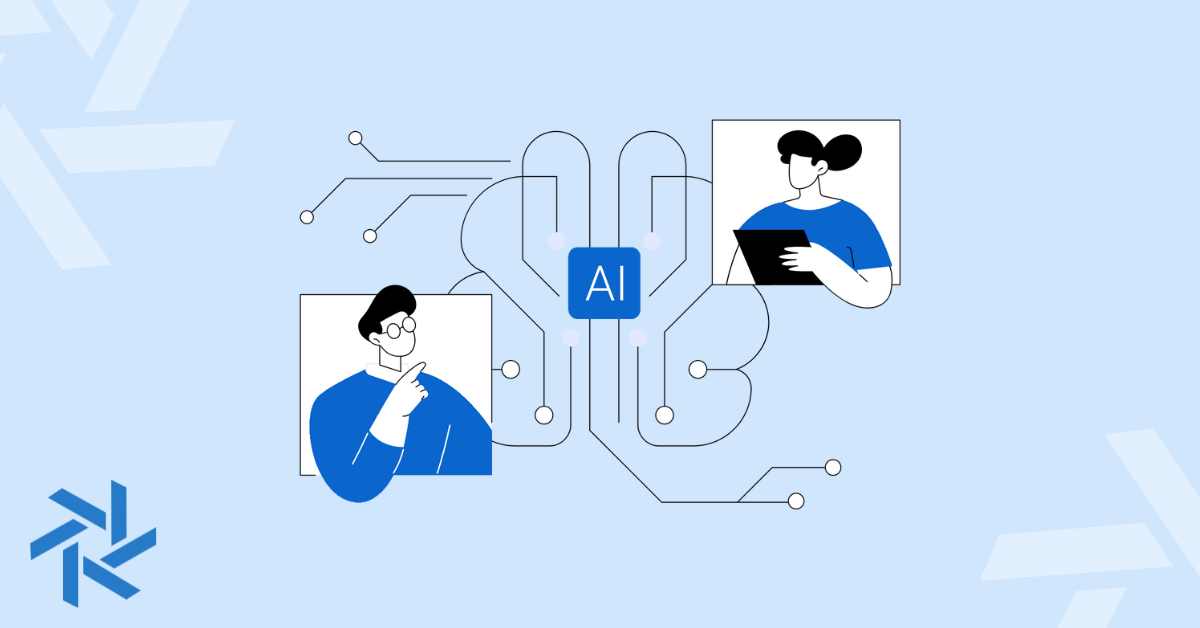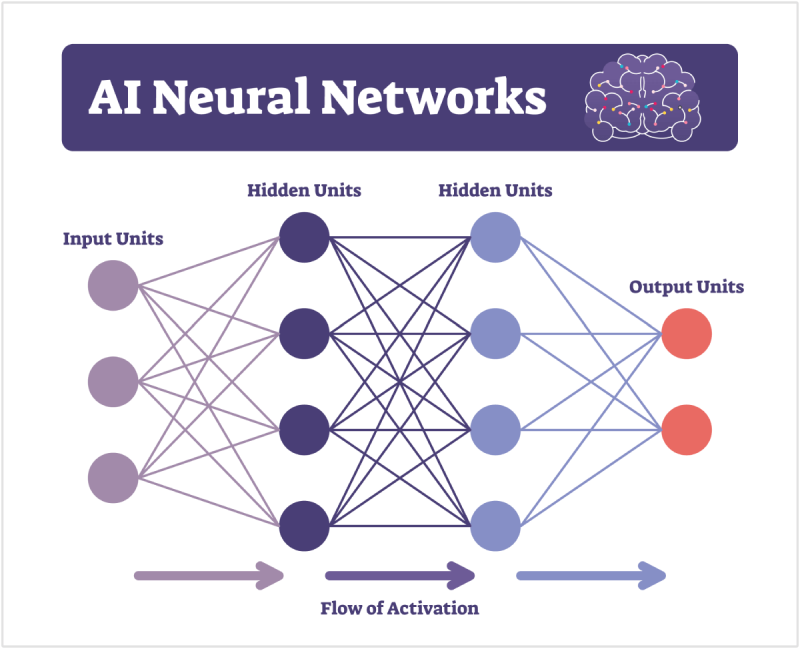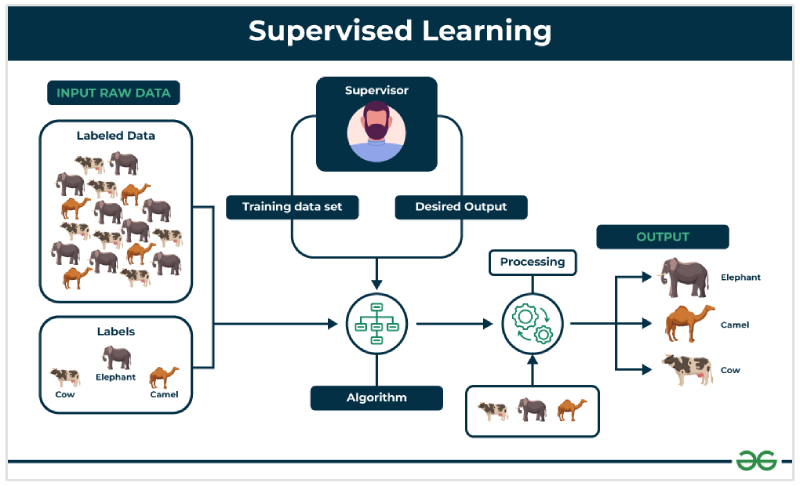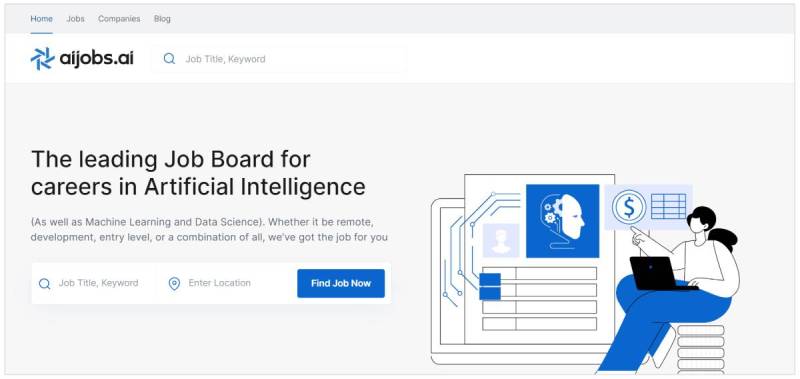11 Key AI Concepts that You Must Know for a Job in Artificial Intelligence

As people and businesses start to incorporate AI solutions and products in their everyday lives and operations, it'll become important to understand general AI concepts.
Whether you're building intelligent systems, automating tasks, or just using AI to manage your schedule, a grasp of key AI concepts is quite useful.
This article dives into 11 of the most important AI concepts that users of Artificial Intelligence should understand.
We'll explore the fundamentals behind concepts like neural networks, natural language processing (NLP), and machine learning, providing you with a strong foundation for navigating the exciting world of AI.
Key AI Concepts for a Career in Artificial Intelligence
Artificial Intelligence
Artificial Intelligence (AI) is a branch of computer science that focuses on creating systems capable of performing tasks that typically require human intelligence.
These tasks include learning, decision-making, problem-solving, and recognizing speech.
At its core, AI aims to mimic human cognitive functions using algorithms and data.
Unlike traditional computer programs that follow explicit instructions to perform specific tasks, AI systems learn from the data they are exposed to, making decisions and improving over time.
AI is not just about simulating human intelligence; it's about enhancing human capabilities by automating mundane tasks, analyzing vast amounts of data quickly, and providing insights that would otherwise be inaccessible or difficult for humans to derive on their own.
Algorithm
An algorithm is essentially a set of rules or instructions designed to solve problems or perform tasks.
In AI, algorithms act as the brain behind the machine, guiding it through complex decision-making processes.
What sets AI algorithms apart is their ability to improve over time. Through a process called machine learning, these algorithms refine their strategies and solutions based on new data they encounter, making them more efficient and effective with each task they perform.
Machine Learning
Machine learning is a subfield of artificial intelligence that focuses on enabling machines to learn from and make decisions based on data.
This allows computer systems to improve their performance on specific tasks over time without being explicitly programmed for each scenario.
A practical example of machine learning that most people can identify with is Spotify's recommendation system.
Here's how machine learning drives this process:
- Data Collection: The system gathers data on what you listen to, along with preferences from users with similar tastes.
- Pattern Recognition: Algorithms analyze this data to find patterns, such as favorite genres or artists.
- Learning: Over time, the system learns your preferences based on your interactions and feedback.
- Prediction and Improvement: Using this learned knowledge, it predicts and recommends songs you might like, refining its suggestions as it receives more data about your preferences.
Deep Learning
Deep learning is an AI concept that is a subset of machine learning.
Deep learning utilizes artificial neural networks with many layers to process information. These complex networks, inspired by the structure of the human brain, allow AI to learn intricate patterns and relationships within data.
Whereas traditional machine learning algorithms might struggle with complex tasks like image recognition, deep learning excels at these areas due to its ability to extract and analyze features at increasing levels of abstraction.
This layered approach to learning is what earns deep learning its name and makes it a powerful tool for various AI concepts we'll explore throughout this article.
Computer Vision
Computer vision is an area of AI concerned with enabling computers to "see" and interpret the world around them.

Source: Appen
By analyzing images and videos, computer vision programs can extract information, identify objects, and even track movement.
This technology is used in everything from self-driving cars that navigate by recognizing objects on the road to facial recognition software that identifies individuals in photos. It's a core AI concept that allows machines to perceive and understand the visual world.
Neural Networks
Neural networks are a foundational concept in artificial intelligence that power many of the innovations we see today.
Inspired by the human brain's structure and functioning, these networks consist of interconnected nodes, like simplified versions of neurons, that process information and transmit signals to each other.

By adjusting the connections between these nodes, neural networks can learn and improve their ability to recognize patterns, classify data, and make predictions. They play a crucial role in deep learning and various AI applications.
Supervised Training
Supervised learning is a type of AI training where a program learns from labeled data. By feeding a program a massive dataset with pre-labeled examples, the program can learn the relationship between the input data and the desired output.
For instance, a supervised learning program designed for image recognition might be trained on millions of images labeled with the objects they contain (cat, car, etc.).
By analyzing these labeled examples, the program learns to recognize the features that define each object and can then apply that knowledge to identify objects in new, unseen images.
This supervised approach is widely used in various AI applications, laying the groundwork for the program's ability to perform tasks and make intelligent decisions.

Unsupervised Training
Unsupervised training in machine learning is a technique where the algorithm learns patterns from unlabeled data.
Without explicit instructions on what to learn, it identifies structures, clusters, and relationships within the data itself. This approach is instrumental in uncovering hidden insights that might not be immediately obvious, even to seasoned analysts.
Unsupervised training is useful for tasks like:
- Clustering: Unsupervised learning can group similar data points together, helping to identify underlying structures within the data. Imagine organizing a library by automatically grouping books based on genre or topic.
- Dimensionality Reduction: Sometimes data sets have many features (dimensions). Unsupervised learning can help reduce these dimensions while retaining the most important information. This makes complex data easier to analyze and visualize.
- Anomaly Detection: Unsupervised learning can identify data points that deviate significantly from the norm. This is useful for fraud detection or identifying unusual network activity.
NLP
Natural Language Processing (NLP) is a branch of AI that equips computers with the ability to understand and manipulate human language. Imagine teaching a computer to read, write, and speak like a human.
NLP allows AI programs to process and analyze text and speech data, extracting meaning and intent. This opens doors for a variety of applications, including:
- Machine translation: NLP empowers programs to translate languages in real-time, breaking down communication barriers.
- Chatbots and virtual assistants: NLP allows AI to understand user queries and respond in a natural way, making chatbots and virtual assistants more helpful and engaging.
- Sentiment analysis: NLP can analyze text to gauge sentiment, such as positive or negative opinions expressed in social media posts or online reviews.
- Text summarization: NLP can condense lengthy pieces of text into concise summaries, saving users time and effort.
Inference
Inference in machine learning refers to the process by which a trained model applies what it has learned to new, unseen data.
Once a model has been trained on a specific dataset during the training phase, where it learns to recognize patterns and relationships within that data, it then moves into the inference phase.

The model takes the new data as input, analyzes it based on the knowledge it acquired during training, and generates an output, which could be a prediction (like a spam or not-spam classification for an email) or a classification (like identifying a cat in a new image).
Inference is what allows AI models to be deployed in the real world and put their learned skills to practical use.
Reinforcement Learning
Reinforcement learning takes a different approach to learning compared to supervised and unsupervised training.
Imagine training a dog with treats and rewards. That's essentially the core principle behind reinforcement learning.
An AI program, called an agent, interacts with its environment and learns through trial and error.
The agent receives rewards for desired actions and penalties for undesired ones.
Over time, through this feedback loop, the agent learns to optimize its behavior to maximize the rewards it receives. This approach is particularly useful for tasks where defining the desired outcome with labeled data might be difficult.
Looking for a Job in AI?

Companies are quickly jumping at employing artificial intelligence within their businesses, from marketing to engineering. A career in AI promises excellent growth and opens up a world of possibilities.
So, if you're looking for a job in AI, feel free to check out our job listings for any open positions at some of the world's leading technology companies.









